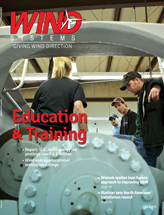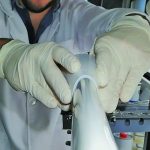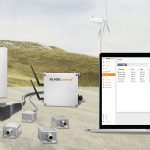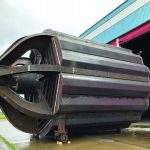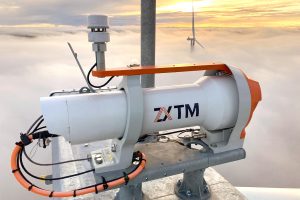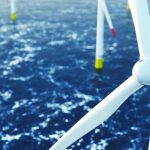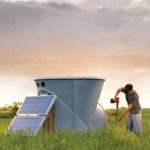Two advanced U.S. wind energy research and testing facilities have joined forces to help the wind energy industry improve the performance of wind turbine drivetrains and better understand how the turbines can integrate more effectively with the electrical grid.
Through a Cooperative Research and Development Agreement (CRADA), the Energy Department’s National Renewable Energy Laboratory (NREL) and Clemson University will partner to share resources and capabilities in the operation and development of testing facilities. The CRADA also includes the exchange of staff for training and research and development purposes, including collaborative participation in facility commissioning and testing activities.
 “Our partnership with Clemson is an excellent example of how a university and a national laboratory can work together,” said Brian Smith, acting center director for NREL’s National Wind Technology Center (NWTC). “The collaborative efforts of these two research entities will complement one another for the technical advancement and large-scale deployment of wind and water power.”
“Our partnership with Clemson is an excellent example of how a university and a national laboratory can work together,” said Brian Smith, acting center director for NREL’s National Wind Technology Center (NWTC). “The collaborative efforts of these two research entities will complement one another for the technical advancement and large-scale deployment of wind and water power.”
NREL, with support from the Wind Program in the Department of Energy’s (DOE) Office of Energy Efficiency and Renewable Energy, leads the way in developing custom facilities and capabilities to enable testing of full-scale integrated wind turbine drivetrain systems in accordance with the needs of the wind industry. NREL currently operates 2.5 MW and 5 MW dynamometers and a controllable grid interface grid simulator that can help engineers better understand how wind turbines will react to grid disturbances.
 Supported by a $45.6 million DOE investment that is cost matched with over $70 million in funds, Clemson Univ currently operates a drivetrain testing facility with 7.5 MW and 15 MW dynamometers at its SCE&G Energy Innovation Center, as well as a 20 megavolt ampere (MVA) grid emulator the Duke Energy eGrid, which enables mechanical and electrical testing of wind turbines and other multi-megawatt devices bound for the electrical grid. These projects spurred the development of the $21 million Zucker Family Graduate Education Center, which will house Clemson’s graduate programs in the Charleston, Soth Carolina, area and is located adjacent to the test facilities. NREL and Clemson are installing hardware-in-the-loop modeling and control capabilities to enhance their testing facilities.
Supported by a $45.6 million DOE investment that is cost matched with over $70 million in funds, Clemson Univ currently operates a drivetrain testing facility with 7.5 MW and 15 MW dynamometers at its SCE&G Energy Innovation Center, as well as a 20 megavolt ampere (MVA) grid emulator the Duke Energy eGrid, which enables mechanical and electrical testing of wind turbines and other multi-megawatt devices bound for the electrical grid. These projects spurred the development of the $21 million Zucker Family Graduate Education Center, which will house Clemson’s graduate programs in the Charleston, Soth Carolina, area and is located adjacent to the test facilities. NREL and Clemson are installing hardware-in-the-loop modeling and control capabilities to enhance their testing facilities.
“Clemson University’s mission of promoting public-private partnerships to develop new technologies for the energy industry and educate the workforce of the future at the SCE&G Energy Innovation Center and NREL’s activities at the NWTC share a lot of common ground,” said Dr. Nikolaos Rigas, executive director of the Clemson University Restoration Institute. “This agreement will provide the framework for further collaboration and technical exchanges that benefit both organizations and brings a stronger team together to tackle broader challenges related to energy.”
— Source: NREL



















